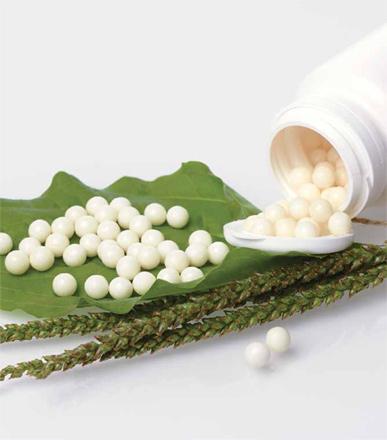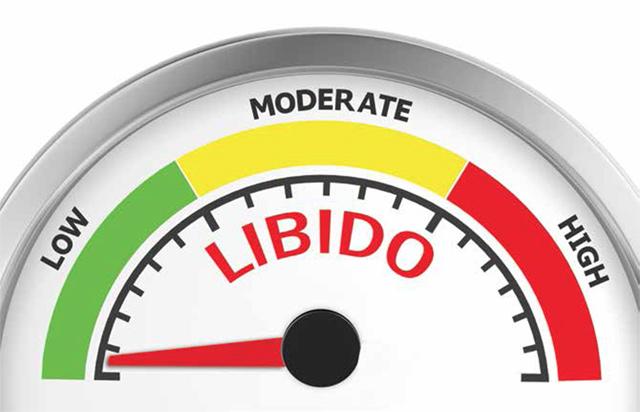You are here
Homoeopathy: medicine or magic?
By Abeer Jabaji , Family Flavours - Jul 12,2020 - Last updated at Jul 12,2020

Photo courtesy of Family Flavours magazine
By Abeer Jabaji
Classical Homoeopath and Personal Development Coach
When a person is sick, symptoms frequently involve the mental, emotional and physical areas of the body.
Many people around the world practice homoeopathy because of its holistic approach and healing outcomes.
Homoeopathy at a glance
Homoeopathy is a 200-year-old form of holistic medicine believed to stimulate and strengthen the body‘s ability to heal itself. The World Health Organisation recognises homoeopathy as the second largest system of healing in use in the world — by 500 million people.
Conventional medicine views symptoms of disease as part of the illness and aims to suppress or abolish the symptoms. Homoeopathy sees symptoms as the body’s reaction against illness in the attempt to overcome it, and therefore seeks to stimulate the body’s natural responses rather than suppress them. Homoeopathy seeks to treat the root cause of the disease on all levels (mental, emotional and physical).
Dr Samuel Hahnemann, the founder of Homeopathy, was born in Germany in the 18th century, coined the word homoeopathy, derived from Greek and Latin, meaning “like disease”. The main principle of homoeopathy is called the law of similars: a substance of natural origin that produces certain symptoms in a healthy person which will cure those same symptoms in a sick person.
Hahnemann experimented on himself by taking the substance Cinchona from the bark of the tree used to treat malaria. He developed the symptoms of a malaria-like fever as well as flu-like symptoms (chills, muscle aches, tiredness and diarrhoea.) Through the observation of the effects of Cinchona on himself (a healthy individual), Hahnemann realised these were, in turn, the very symptoms that the bark could cure. He then used the substance to successfully treat a woman with the symptoms of relapsing fever.
Remedies
More than 2,000 remedies have been derived over the years, all made from natural plant, animal and mineral sources. The whole plant is used with no chemical additives. The remedies are extracted from these natural sources and are then diluted in a water and alcohol base to such a degree that not even the original substance is found in the liquid.
One drop is taken of the substance is diluted with 100 drops of water and then again one drop of this is taken and diluted it with another 100 drops of water. The more diluted the substance the more potent it becomes. It is then shaken or succussed at each step of dilution. Millions of remedies can be made from that one drop. This extreme dilution process enhances the curative properties of the medicines while the toxic side effects are eliminated.
Homoeopathic treatment aims to find the smallest effective dose in order to stimulate a healing response in the body without the risk of side effects. Only enough is administered to initiate the healing process. Homoeopathic remedies stimulate the entire body to heal itself, not merely to suppress symptoms.
Provings
The method by which homoeopathic remedies are “tested” on healthy volunteers for their emotional, mental and physical effects is called “proving”. Conducting these “tests” on the healthy ensures that the symptoms recorded will be from the substance alone and not from symptoms of a pre-existing illness. If the substance is able to produce a set of symptoms in healthy provers, it will have a curative effect if prescribed for those unwell with similar symptoms — the homoeopathic principle of “like cures like”. People with the same disease don’t get the same homoeopathic remedy.
Why is homoeopathy
so popular?
• Homoeopathic treatment works with your body’s healing powers to bring about health and well-being
• You are treated as an individual, not as a collection of disease labels
• Homoeopathy treats all your symptoms, at all levels of your being — mental, emotional and physical and finds the ‘like cures like’ match for them
• Homoeopathically prepared remedies, providing a minimum dose, are gentle, subtle and powerful. They are non-addictive and not tested on animals
• It is called a complete holistic system because it restores health at all levels: mental, emotional and physical
• Homoeopathic medicines are safe to use as they rarely cause side-effects. This means when used appropriately, under the guidance of a qualified homoeopath, they can be taken by people of all ages, including babies, children and pregnant and breastfeeding women
Treatment
The two main categories of treatment in homoeopathic medicine are acute and chronic.
• Acute treatment is for the illness of recent onset; it may be like the common cold or it may be an illness that progresses if not treated; for example, pneumonia. The body might overcome a cold sooner or later but the appropriate remedy gently stimulates the body to recover more quickly and efficiently
• Chronic treatment addresses a recurrent health problem. The length of treatment depends on many factors, including the nature of the problem, family medical history, previous treatment and more. The goal is to help you return to a state of wellbeing through individualised homoeopathic treatment
• Classical homoeopathy focuses on selecting one right remedy for treating the whole person. Only one remedy is given at a time, often only once and only as a single tiny pill
So is homoeopathy real medicine or is it magic? Based on my expertise as a classical homoeopath, I think it is so real that its effect is truly magical!
Reprinted with permission from Family Flavours magazine
Related Articles
There are many problems with drinking one and a half litres of water first thing in the morning.
Consultant Urological Surgeon and Consultant in Sexual Medicine Many women excuse their low libido (sex drive) as part of the ageing pr
AMMAN — The Anti-Narcotics Department (AND) on Sunday launched an awareness campaign to warn against the consumption of the deadly illegal n

















